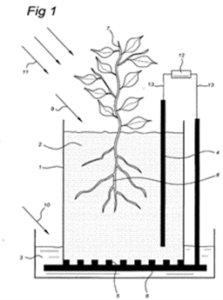
The UPC’s first ruling on equivalence in patent infringement
The Unified Patent Court (UPC) has issued its first decision on patent infringement by equivalence in Plant-e Knowledge B.V. & Plant-e B.V. v. Arkyne Technologies S.L. (aka Bioo) (UPC_CFI_239/2023). This case sets an important precedent and insight into how patents will be enforced under the unitary system. By comparing this decision with UK case law, particularly Actavis v. Eli Lilly [2017] UKSC 48, we can explore how the concept of equivalence is evolving in European patent law.

The dispute concerned a patent (EP2137782) owned by Plant-e, which covers a method of generating electricity using living plants. The claimant argued that Bioo’s products infringed the patent, even though they did not replicate the claimed invention in an identical manner.
In reaching its decision, the UPC assessed whether Bioo’s product fell within the scope of the patent by applying a four-step test, which considers whether the differences between the patented invention and the accused infringing product are minor enough that the core inventive concept remains unchanged.
The four-part test
A variation is equivalent to an element specified in the claim if the following four questions are answered in the affirmative:
i. Technical equivalence: does the variation solve (essentially) the same problem that the patented invention solves and performs (essentially) the same function in this context?
ii. Fair protection for patentee: is extending protection proportionate to fair protection?
iii. Reasonable legal certainty: does the skilled person understand from the patent that the scope is broader than literally claimed?
iv. Is the allegedly infringing product novel and inventive over the prior art?
The court concluded that the Bioo product infringed the patent under the doctrine of equivalents.
Comparison with UK patent law on equivalence
The UK Supreme Court redefined the approach to patent infringement by equivalence in Actavis v. Eli Lilly, introducing a three-part test:
i) Notwithstanding that it is not within the literal meaning of the relevant claim(s) of the patent, does the variant achieve substantially the same result in substantially the same way as the invention, i.e. the inventive concept revealed by the patent?
ii) Would it be obvious to the person skilled in the art, reading the patent at the priority date, but knowing that the variant achieves substantially the same result as the invention, that it does so in substantially the same way as the invention?
iii) Would such a reader of the patent have concluded that the patentee nonetheless intended that strict compliance with the literal meaning of the relevant claim(s) of the patent was an essential requirement of the invention?
Key differences and implications
The UPC and UK approaches both recognise a doctrine of equivalence in patent infringement, which can prevent unfair circumvention of patent rights by, for example, making minor inconsequential changes to a product (or process) that are outside of the literal claim scope. Both appear to be patentee-friendly structured approaches and have similar provisions in recognising the technical differences that any alternative provides. The UPC test does additionally require consideration of extending “fair protection for the patentee”, with an element that considers if this is “proportionate”, which is absent from the UK version. Furthermore, the UPC requires the alleged infringing product itself to be novel and inventive over the prior art, which provides a further element for analysis.
The UPC decision is first instance and so there could be greater clarity on the UPC approach once there are appeal-level decisions; this contrasts with the UK Actavis decision which is a Supreme Court decision and so the highest level of authority in the UK.
Therefore, as the UPC builds its case law, its approach to equivalence will become clearer, but early signs suggest it is willing to interpret claims differently to the UK courts, and it is likely that the facts of each case could be critical to whether one court provides a more favourable interpretation to equivalence than the other.
Here at Barker Brettell, we have experienced practitioners on hand, who can guide you on contentious matters. If you would like to understand more, please contact the author or your usual Barker Brettell representative.



